Shooting sports and activities are exhilarating and require skill and precision. However, they also expose participants to potentially harmful levels of noise. Protecting your hearing is crucial, and choosing the right ear protection is a significant part of that. This comprehensive guide will walk you through what to look for when buying shooting ear protection, ensuring your ears remain safe while you enjoy your shooting activities.
Key Takeaways:
- Understand the importance of the Noise Reduction Rating (NRR) when selecting ear protection.
- Learn the differences between electronic and passive hearing protection and which might be best for your needs.
- Discover the features that contribute to comfort and effectiveness in ear protection for extended shooting sessions.
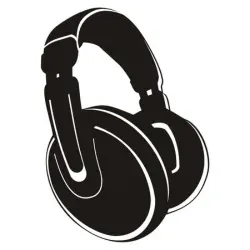
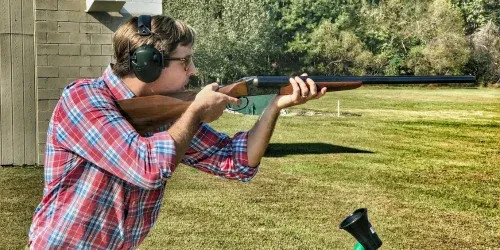
The Basics of Hearing Protection
When you're at the gun range or out hunting, the sound of gunfire can reach dangerous levels, potentially causing permanent hearing loss. Wearing ear protection is essential to safeguard your hearing. The two main types of hearing protection are passive and electronic. Passive hearing protection includes simple earplugs and earmuffs that physically block out sound. Electronic hearing protection, on the other hand, uses technology to reduce harmful noises while allowing you to hear conversations and range commands.
Noise Reduction Rating (NRR): The Deciding Factor
The Noise Reduction Rating (NRR) is a standard measure used to determine the effectiveness of hearing protection devices. The higher the NRR, the greater the noise reduction. When choosing shooting ear protection, look for a high NRR to ensure maximum hearing protection. It's important to note that the actual level of protection provided is often less than the rated reduction, so opting for a higher NRR can offer a better safety margin.
Considering the Noise Protection Overall
When selecting shooting ear protection, consider the overall noise protection it offers. This includes not only the NRR but also how well the ear protection fits and seals out noise. The right hearing protection will reduce the risk of permanent hearing damage while allowing you to enjoy shooting sports safely.
Electronic vs. Passive: Making the Right Choice
Electronic hearing protection is often considered the best shooting ear protection due to its advanced features. These devices can amplify ambient sounds, allowing you to hear conversations and range commands clearly, while still protecting you from the loud noise of gunfire. Passive hearing protection, while simpler and often less expensive, doesn't provide this level of functionality. Your choice will depend on your specific needs and the shooting environment you frequent.
In-Ear vs. Over-Ear: Personal Preference
The choice between in-ear plugs and over-ear muffs often comes down to personal preference. In-ear protection is generally more discreet and can be more comfortable in hot weather, while over-ear muffs provide a higher noise reduction rating and can be easier to put on and take off. Consider trying both styles to determine which is more comfortable and effective for your needs.
Comfort Matters: Finding the Right Fit
Comfort is key when it comes to wearing ear protection for extended periods. Look for ear protection with soft ear cups or foam earplugs that fit securely without causing discomfort. A secure fit is essential not only for comfort but also for ensuring the effectiveness of the hearing protection. If your ear protection doesn't fit well, it won't provide adequate protection against loud noises.
Custom Molded Options: The Ultimate Fit
For those looking for the best in ear protection for shooting, custom molded earplugs like Decibullz® offer a personalized fit. These earplugs are molded to the exact shape of your inner ear, providing a secure fit and excellent noise protection. While they can be more expensive, the custom fit ensures that they stay in place and provide consistent protection.
Durability and Quality: Long-Term Considerations
Investing in durable and high-quality hearing protection is wise for anyone who spends a lot of time at the shooting range. Look for products made from robust materials that can withstand the wear and tear of regular use. Additionally, consider the battery life of electronic ear protection, as you don't want to be caught without power in the middle of a shooting session.
Indoor vs. Outdoor Shooting: Different Needs
The type of shooting you do will influence the kind of ear protection you need. Indoor shooting ranges typically have higher noise levels due to the enclosed space, which means you'll need ear protection with a higher noise reduction rating. Outdoor shooting may allow for more flexibility in the style of hearing protection you choose.
The Role of the Muzzle Break
If you're using a firearm with a muzzle break, it's important to note that these devices can increase the noise level of your shots. This makes choosing effective hearing protection even more critical. Ensure that your ear protection can handle the increased decibels produced by firearms with muzzle breaks.
The Importance of a Proper Cheek Weld
For shooters, maintaining a proper cheek weld is crucial for accuracy. Some bulky earmuffs can interfere with this, so it's important to choose ear protection that allows you to position your face properly against the stock of your firearm. Slim-profile electronic earmuffs or in-ear protection can be excellent choices to avoid any disruption to your shooting technique.
Electronic Features: More Than Just Noise Reduction
Modern electronic ear protection comes with a variety of features, such as Bluetooth capability, which allows you to connect to your phone or other devices. Some models even have built-in microphones so you can communicate with others without removing your ear protection. These additional features can enhance your shooting experience, but they also come at a higher cost.
Battery Life: Planning for Extended Use
For electronic hearing protection, battery life is an important consideration. Look for models with long battery life or the option to use rechargeable batteries. Having spare batteries on hand is also a good practice, especially if you plan to spend a full day at the range.
The Downside of Bluetooth
While Bluetooth capability in electronic ear protection is convenient, it can also be a distraction. Be mindful of the potential for Bluetooth connections to interfere with your focus on shooting and safety. It's important to balance the benefits of connectivity with the need to remain alert and attentive in a loud environment.
Hearing Protection and Eye Protection: A Dual Necessity
When buying shooting ear protection, don't forget about eye protection. Many ear protection options are designed to be worn comfortably with safety glasses. Ensuring that your ear protection doesn't interfere with your eye protection is crucial for maintaining overall safety on the range.
Sound Quality: Not Just About Protection
The sound quality of electronic ear protection is an important factor for many shooters. High-quality models will provide clear sound without distortion, allowing you to hear ambient sounds and conversations accurately. This is particularly important for understanding range commands and maintaining situational awareness.
The Importance of a Secure Fit
A secure fit is essential for ear protection to be effective. Whether you choose earplugs or earmuffs, make sure they fit snugly and create a good seal around the entire ear or ear canal. This will help block out loud noises and provide adequate protection.
The Role of Foam Earplugs
Foam earplugs are a simple and effective form of passive hearing protection. They are inexpensive, disposable, and offer a high noise reduction rating when inserted properly. For those who prefer a low-profile option, foam earplugs can be an excellent choice for effective hearing protection.
The Convenience of Electronic Headsets
Electronic headsets offer the convenience of hands-free operation, allowing you to focus on your shooting without worrying about adjusting your ear protection. Look for models with intuitive controls and easy access to volume adjustments.
The Impact of Noisy Environments on Hearing
Regular exposure to noisy environments, such as shooting ranges, can lead to permanent hearing loss. It's crucial to wear hearing protection every time you're exposed to loud sounds to prevent cumulative hearing damage.
Health Administration Recommendations
Organizations like the Occupational Safety and Health Administration (OSHA) provide guidelines for noise exposure and hearing protection. Following their recommendations can help you choose ear protection that meets safety standards and protects you from hearing damage.
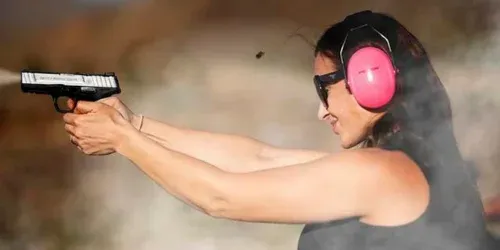
Summary
Choosing the right shooting ear protection is essential for maintaining your hearing health while engaging in shooting activities. Consider the noise reduction rating, comfort, durability, and additional features when making your selection. Whether you opt for passive or electronic protection, ensure that it fits well and provides adequate noise protection for the environments you'll be shooting in. Remember, investing in quality ear protection is an investment in your long-term hearing health.
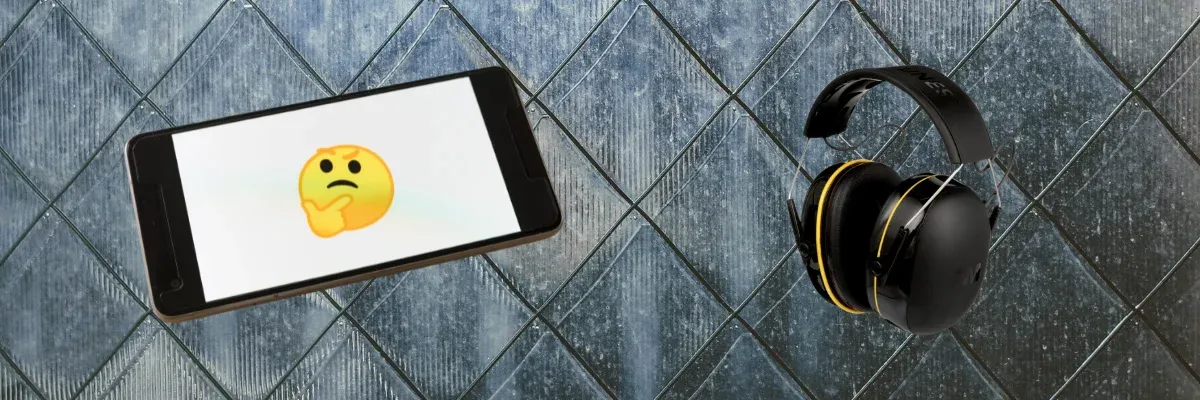
FAQs
What is the most important factor to consider when buying shooting ear protection?
The most important factor is the Noise Reduction Rating (NRR), which indicates the level of noise protection offered by the ear protection. A higher NRR means more noise reduction, but comfort, fit, and additional features are also important considerations.
Can electronic ear protection be used for both indoor and outdoor shooting?
Yes, electronic ear protection can be used for both indoor and outdoor shooting. However, indoor shooting ranges typically require a higher NRR due to louder noise levels, so make sure your electronic protection is adequate for the environment.
How often should I replace my ear protection?
The lifespan of ear protection varies depending on the type and frequency of use. Inspect your ear protection regularly for signs of wear and tear, and replace it if it's damaged or no longer provides a secure fit. Foam earplugs should be replaced after each use, while earmuffs and electronic protection can last several years with proper care.
What happens when you don't wear ear protection:
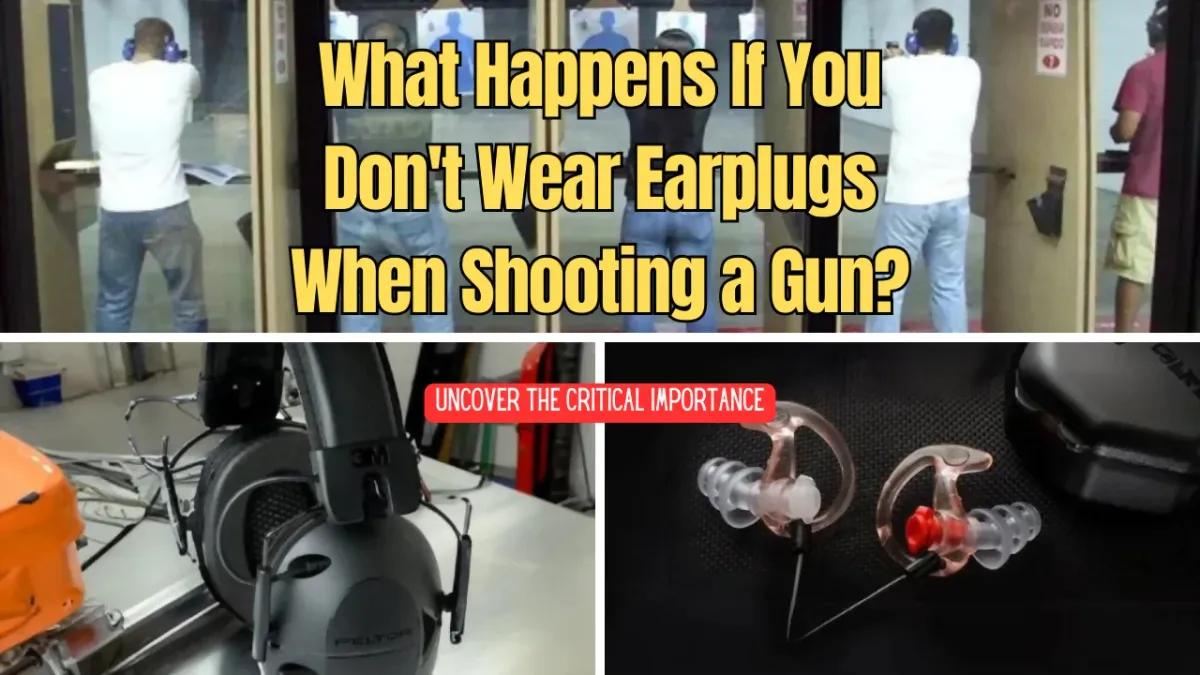
Our review of the best shooting ear protection:











